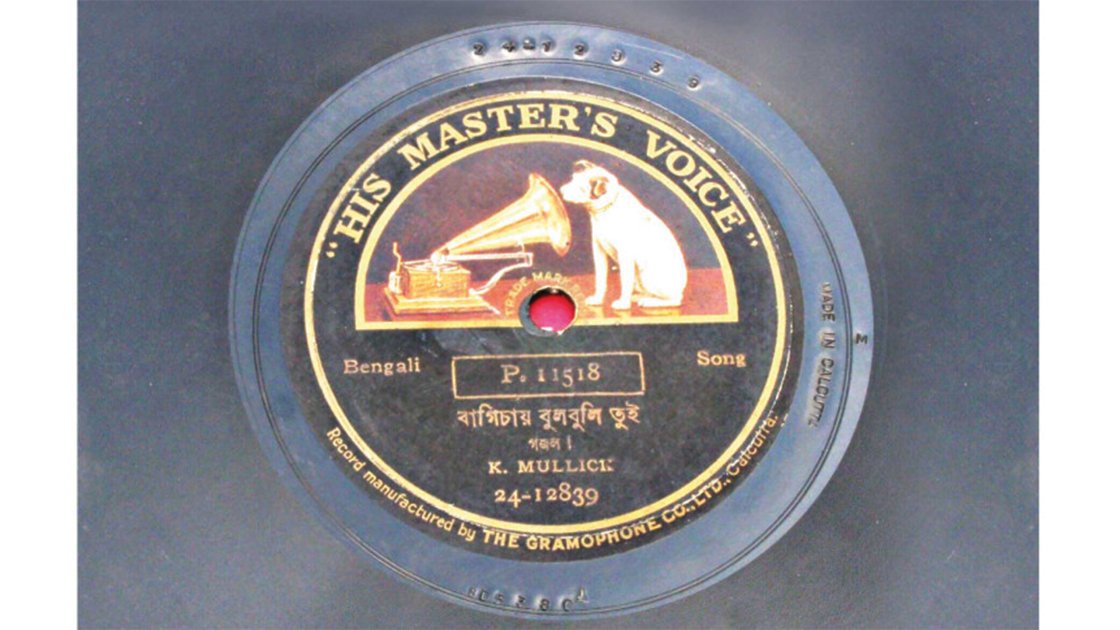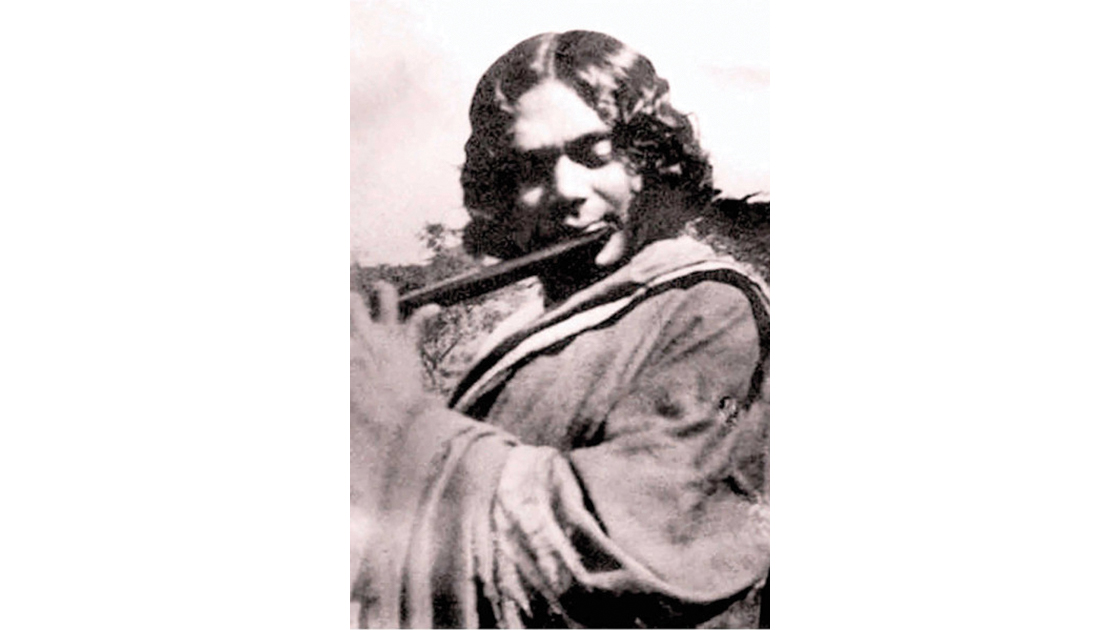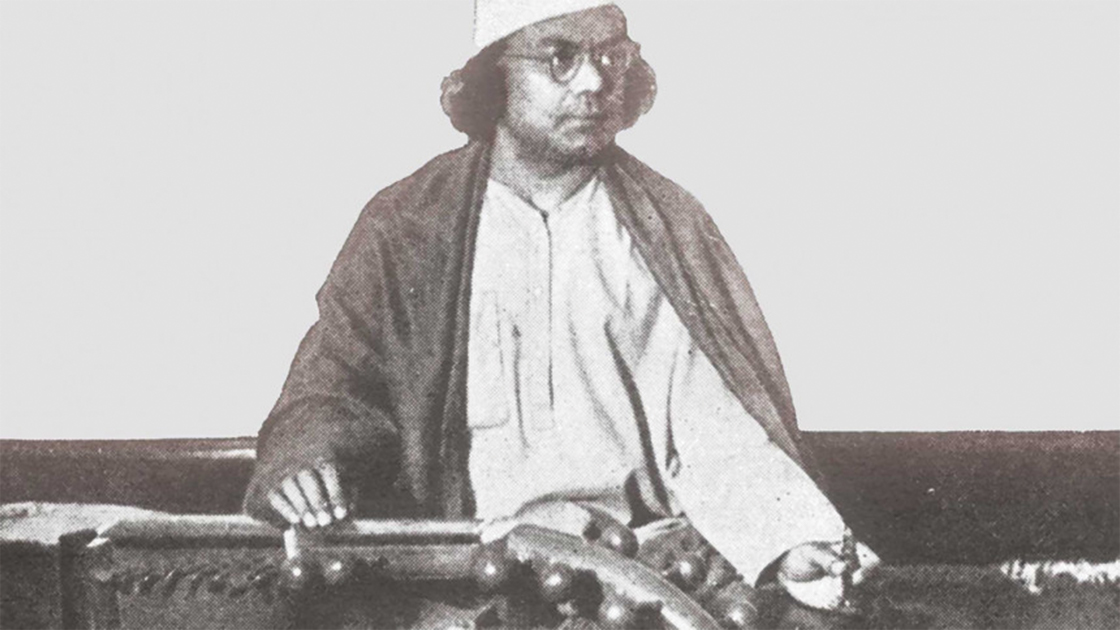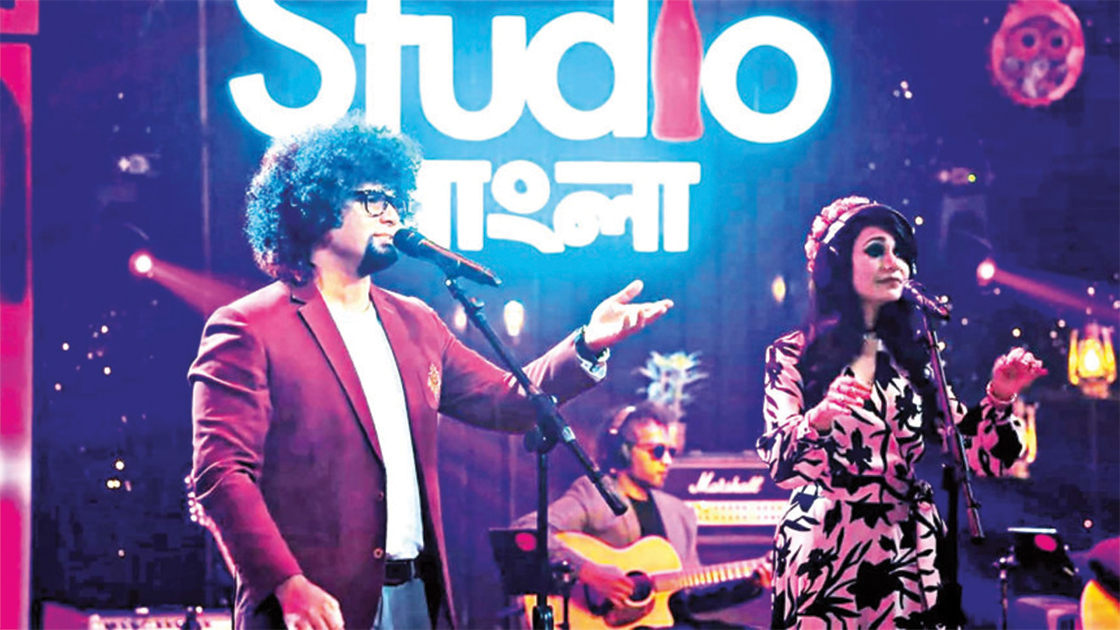
‘Bulbuli’: Nazrul’s music for future listeners?
29-08-2022
PART I
We were at the dinner table. My wife asked if I had seen Bulbuli, the Coke Studio Bangla song. Till then I hadn't. The upload was only a few days old.
I asked Lawna, why should I watch the video? Her first response was that it went viral in social media on its first day. I said, so what? She then mentioned that the rendition was an improvisation of Kazi Nazrul Islam's Bagichai Bulbuli Tui. This raised an eyebrow. This Nazrul song is one of my all-time favourites.
The name was on the tip of my tongue. Lawna mentioned before I could. 'Do listen. The rendition is as good as that of Manabendra Mukherjee'. This last comment made me curious. Bagichai Bulbuli Tui is the first song I heard on Manabendra Mukherjee's voice. I've listened to it many times. That song is 'the' song that got me hooked on to Manabendra, first, and then Nazrul's music.
There was now no reason not to watch. There was a reason to look back, though. Nazrul's music has a special place in the hearts of all Bengalis.

PART II
It was 1926. Kazi Nazrul Islam was living in Keshtanagar in Hooghly, West Bengal. He was facing financial difficulty. This was not new for Nazrul. His second son, Arindyam Khaled, was severely sick. Nazrul was badly in need of money for Arindyam's treatment, and of course his family expenses.
Nazrul got on a train to Calcutta. His destination was the office of the literary magazine Kallol. Seeing Nazrul's face, the editor, Suresh Chandra Mukherjee, realized it was serious. Nazrul asked for an advance. Nazrul mentioned that his son was sick. Suresh Mukherjee honoured Nazrul.
Nazrul was about to leave when he remembered a note in his pocket. He handed it to Nripen Krishna Chatterjee. It was a Ghazal written on the back of a handbill during the train trip. It was one of Nazrul's first Ghazals, Bagichai Bulbuli Tui. Nazrul wrote the Ghazal extempore. Arindyam's nickname was Bulbul.
Two years later, in 1928, the Ghazal became a song. The tune was based on Raga Bhairavi. This raga is suited for the morning. The Raga is thought to extract a devotional mood. If Nazrul was thinking of his sick son when he was writing the Ghazal, then Bhairavi does justice to the mood of the lyrics. The Kaharba taal (a beat of 4+4) was chosen for the tune. Kaharba and Dadra (a beat of 3+3) were the popular taals for Kheyal and Thumri, the avant-garde music of the 1920s and 1930s.
During the Durga Puja festivals of 1928, HMV published the song. K Mallik was the first person to officially sing and record the song. Mallik's real name was Munshi Muhammad Kashem. He was one of the first Muslim singers who recorded Shyama Sangeet, songs in devotion to goddess Kali. Shyama Sangeet is a genre where Nazrul had and still does have an absolute monopoly.

PART III
The mid-1920s was a watershed in the gramophone industry. The 'electrical era' was born in 1925. Sound could now be recorded electronically. Electronic recording improved the fidelity (reproduction) of sound. However, synchronizing sound with the speed of the disc was still a challenge. This was the case for many recordings in British India. The original recording of 1928 may sound funny to the ears in 2022, but to the ears of that time, it was avant-garde.
Improvisation was limited by 7-inch vinyl at 78 rpm. A single recording on one side did not exceed three minutes. Condensing a disc could add a few more seconds, but not more. All songs recorded during Nazrul's career was characterized by this three-minute mark. The finesse of Nazrul's music was difficult to express in this time. This situation didn't change for a long time.
PART IV
In 1942 Nazrul fell ill. He never recovered from this illness. The legacy of his music lived on, though. Whatever the occasion in Bengal; whatever the social or religious background; and whatever the mood of a listener, Nazrul's repertoire would never disappoint. Nazrul Sangeet was waiting for an incarnation, to break that three-minute mark.
From the late 1920s till the 1960s, Nazrul's music was available only on 7-inch 78 rpms and on radio airwaves. LPs started to become popular in the sub-continent in the early 1970s. During this time Nazrul Sangeet saw the rise of two exponents who were instrumental in reviving Nazrul Sangeet to the next generation. These two exponents were Manabendra Mukherjee, and Feeroza Begum.
With the advent of 12-inch LPs, the three-minute mark was breached. Songs that could not find a place on a 7-inch vinyl of 78rpm or later in a 7-inch vinyl of 45 rpm could now be presented in 4 or even 5 minutes. This gave way for improvisation. The singer, and the orchestration now had more freedom to demonstrate finesse of music.
By the time compact cassettes became popular in the mid-1970s, Manabendra and Feeeroza had become the most sold Nazrul Sangeet artistes of their generation. Each of them had their own style in reviving Nazrul Sangeet.
My love for Manabendra and Nazrul's music was through Bagichai Bulbuli Tui. This happened in June or July 1999. I was on one of my summer trips to Bangladesh, while I was studying at Cambridge. I went to Soor Kallal in New Elephant Road. (Late) Mozammel Bhai asked if I had listened to Manabendra. Like to Lawna, my answer that day was in the negative.
Mozammel Bhai gave me two CDs of Manabendra. One was his greatest Adhunik Bangla songs. The other CD was his greatest Nazrul songs. As a teaser, Mozammel Bhai played me Bagichai Bulbuli Tui. This was the fifth song of the CD. 'Listen to this one'.
The 1967 recording of Bagichai Bulbuli Tui was a magic moment for me. It started a re-incarnation. I started to dig Nazrul's music and the Adhunik Bangla genre, the golden era of Bangla music from West Bengal. I moved away from my parents' collection of LPs and cassettes.

PART V
Kazi Nazrul Islam was no stranger to improvisation. Among his many improvisations, the one that stands out in my ears is Shukno Patar Nupur Paye. This song was first recorded in 1933 by Harimati Devi. In 1935, the same tune became Tribhubaner Priyo Muhammad. The artiste this time was Abbasuddin Ahmed.
Nazrul was influenced by a 19th century popular Ottoman ballad. As the ballad travelled through the Ottoman empire, the lyrics were translated. The tune either remained the same or got improvised.
The ballad is known as Uskudara Gideriken, or Katibim in today's Turkey. It's known as Ya Banat Iskandariya in the Arab world; Apo Xeno Topo in Greece; Mu në bashtën tënde in Albania; Pogledaj me Anadolko budi moja ti in Bosnia; and Cerni oči imaš libe in Bulgaria. In recent times, Boney M took the tune, increased its tempo, and recorded Rasputin in 1978. Coke Studio, Pakistan, did their own improvisation under Ishq Kinara - Üsküdar'a Gider Iken in 2013.
Nazrul took the Uskudara Gideriken ballad and increased the tempo a bit and did subtle improvisation of the original tune. This created the sthai (first stanza). He then added a second stanza (antara) that blended with the original tune. This blending made a new and fresh song. Addition of an antara to modify the original is the same grammar that Bulbuli followed.
The stage was now set to watch Bulbuli of Coke Studio, Bangla.

PART VI
The first thing I observed was the 5.45 min duration. This is a good duration. I then wondered if Bulbuli would make an addition like Coke Studio, Pakistan did with Uskudara Gideriken and Nazrul did before that.
The Flamenco guitar intro strummed with the spirit of South Spain, but with a touch of Al-Andalus. This half-minute intro was refreshing. It gave a feeling of the Mediterranean. At the half-minute mark, Rituraj Baidya enters. This was the first time I saw and heard him. At first, I thought if I was watching Billy Preston or not. I now realised why Lawna compared him with Manabendra. It felt like I was listening to Manabendra. At the 90 second mark, the saxophones gave a Cuban touch from the Caribbean. The tabla percussion and Rituraj's voice were perfectly synchronized. You could tell, when they would give a break of one beat and when they both would start again.
The subtle meers was good. However, like Manabendra, Rituraj also struggled pronouncing the kha and the gha sounds that have come from Arabic, Farsi and Urdu alphabets. To Ghazal lovers, pronunciation is where finesse is expressed.
At the 4-minute mark Dol Dol Dol Diyeche is added to Nazrul's composition. I flipped back and listened. I played the notes on my flute and compared with Nazrul's original notes. This addition was a very good blending that sounded a bit East European. The new lyrics and the blending were good.
PART VII
Forty-six years since his death in 1976; and eighty years since he fell ill in 1942, Kazi Nazrul Islam's music has lived on because of its ability to improvise. Since the days of Nazrul till now, each generation has rendered Nazrul's songs in subtle improvisations. These improvisations re-introduced Nazrul's music to contemporary ears. Some improvisations took music forward and remained in the ears for another generation. Others were lost in the sands of time.
Coke Studio Bangla's effort with Bulbuli is a breath of fresh air. It remained faithful to the signature version of Manabendra. It improvised and blended Nazrul's song for today's audience. Will it stand the sands of time? Only time can answer that question. One thing is for certain. Nazrul's music will live on for at least one more generation.
Asrar Chowdhury is a professor of Economics at Jahangirnagar University. He is the author of the Echoes column in SHOUT of the Daily Star. Email: asrarul@gmail.com; asrarul@juniv.edu